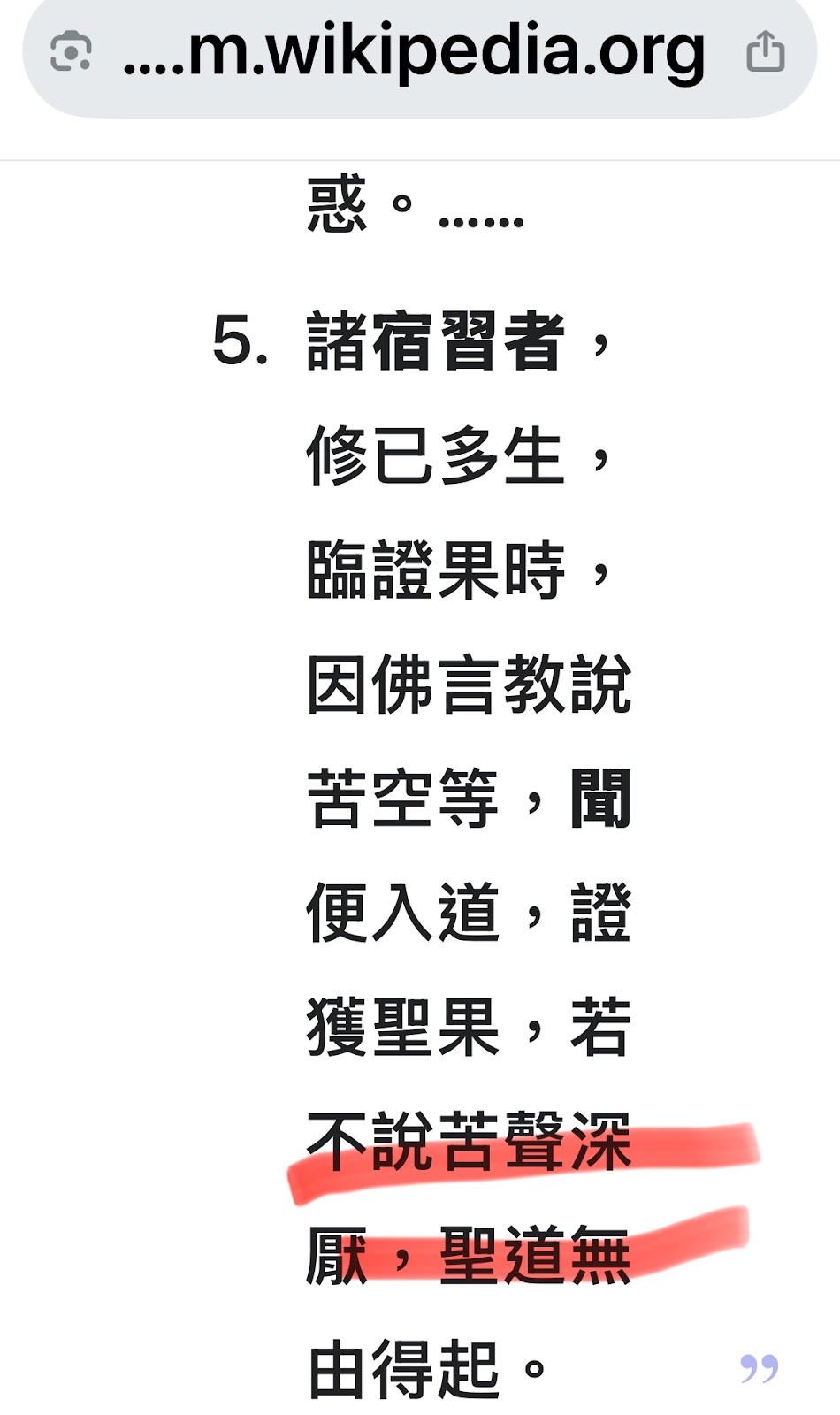問題回覆 : 耳根圓通
關於觀音菩薩的耳根圓通,我們直接看下面(AI資料)第四點,
華人似乎很喜歡「動、靜」是不用分別的,
我想請問:人體的感官可能做到這個點嗎?
人體如何在吵雜的聲音裡面感受到安靜,或是肉體受到攻擊的時候,
修行者必須忍辱到沒有感覺?
我後來說:雜亂無章的佛法,
乾脆請佛陀割肉餵鷹,活著的肉體都要割完了,才叫布施?!
把佛法往不可能或殘酷的方向說去,
只要冠上「無上道的意義」一樣切後世傳誦的佛法暢行無阻。
四聖果是人體可以完成的,
佛法被陳義到反而去推崇身體以外不能碰觸的宇宙世界,
那你要這個方法幹什麼?
你碰不到啊?
就算是四聖果的阿羅漢,聲音還是聲音,肉體一樣會死亡,
而都沒有分別了! 沒有分別是什麼意義呢?感官知覺全部打死嗎?
天哪!我已經很有耐心在回答問題,這種問題我以前都丟到垃圾桶。
「耳根」就是耳朵聽到什麼話,具有判斷的能力,不去隨著話語搖擺,
這是「耳根」,一樣沒有脫離肉體器官,而不是有什麼弦外之音!
根據考證《楞嚴經》是偽經,相關學術資料請讀者自己去查了。
半寄
以下AI資料 「耳根圓通」是什麼? 「耳根」:是指「耳識」、「聽覺的根本」,即從聽聞聲音入門修行。 「初於聞中,入流亡所,所入既寂,動靜二相,了然不生……」 這段話意思是: 1.「初於聞中」:從「聽聲音」入手。 2.「入流亡所」:不是跟著聲音外流去聽,而是反聞自性,往內聽「聲音的來源」。 3.「所入既寂」:內觀的心逐漸寂靜、無聲。 4.「動靜二相,了然不生」:對聲音(動)與靜默(靜)不再分別,心如虛空,不執著於聲音的有無。 這就是耳根圓通的核心修法──反聞聞自性,性成無上道。 |
Response to the Question of“Perfect Penetration via Hearing”
On Avalokiteśvara’s “complete liberation through hearing,” let’s consider point 4 from the AI reference below.
It seems many Chinese Buddhists like to say that "movement and stillness are the same."
But I want to ask: Can the human body really do that?
How can the body feel calm amidst noise?
Or if under physical attack, should a practitioner endure to the extent of being numb?
I then said: If we keep misrepresenting Dharma like this, we might as well interpret “generosity” as the Buddha slicing off all his flesh for a bird—until none is left!
When Dharma is glorified with extreme or impossible ideals, everything becomes acceptable once labeled as “supreme.”
The Four Stages of Enlightenment are something humans can actually reach. However, what’s the purpose when the teachings glorify some realm beyond physical experience? Practitioners can’t even access it.
Even arhats still hear, still die.
If there’s no distinction, does that mean sensory function is nullified?
Honestly, I’ve responded patiently. I used to dismiss these questions entirely.
"Faculty of hearing" means the ear hears words and has the power to judge them without being swayed.
It is still a physical sense and not something beyond the body or filled with hidden meanings.
Also, according to research, the Śūraṅgama Sūtra is not considered authentic. Readers can look it up themselves.
Master Banji
讀者回饋
就跟「善根」有異曲同工之妙?
半寄回應:
是的。耳朵聽到還要大腦判斷,單獨的器官是不能獨立運作的。
還有大德想知道我對「心與心所」的看法,
前面的文章有提過,它是部派佛教論師對心理的分析跟做出一種修行遵循的次序,
人要對自己這麼了解自己,一定要有入定經驗,
但入定會浸在喜樂裡,修行者也不見得想再了解這些,
之前說過了在入定跟出定之間跑來跑去,其實也很累,
所以呢?我不會講。哈
廢話!
半寄
Reader’s feedback
Q:Is it somewhat analogous to the idea of“wholesome roots”?
Banji replied:
Yes.
The ears may hear, but the brain still has to make a judgment—no single organ can function independently.
Some laymen also want to know how I see “mind and mental factors.”
As I mentioned in earlier posts, this is an analysis by Abhidharma scholars in sectarian Buddhism, laying out a psychological framework and a sequence to follow in practice.
To truly understand yourself this deeply, meditative experience (samādhi) is essential.
However, entering samādhi is often so blissful that practitioners may no longer feel the need to analyze such things.
As I’ve said before, moving back and forth between entering and exiting samādhi can be exhausting.
So then? I have no more to say. Laughs.
Pointless talk!
Master Banji



